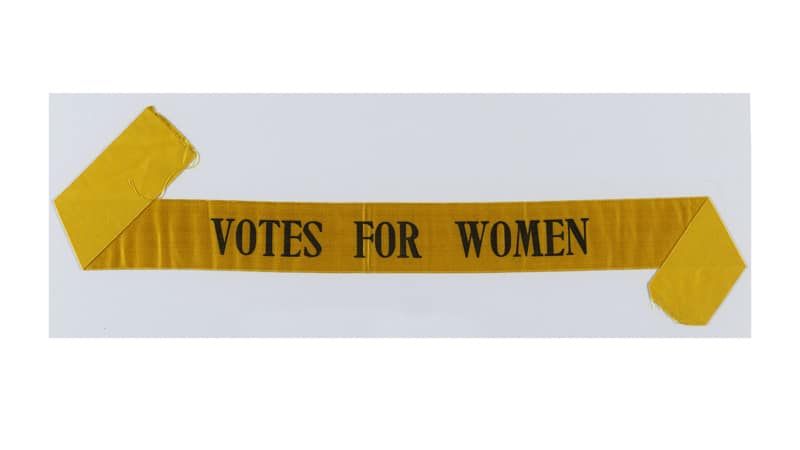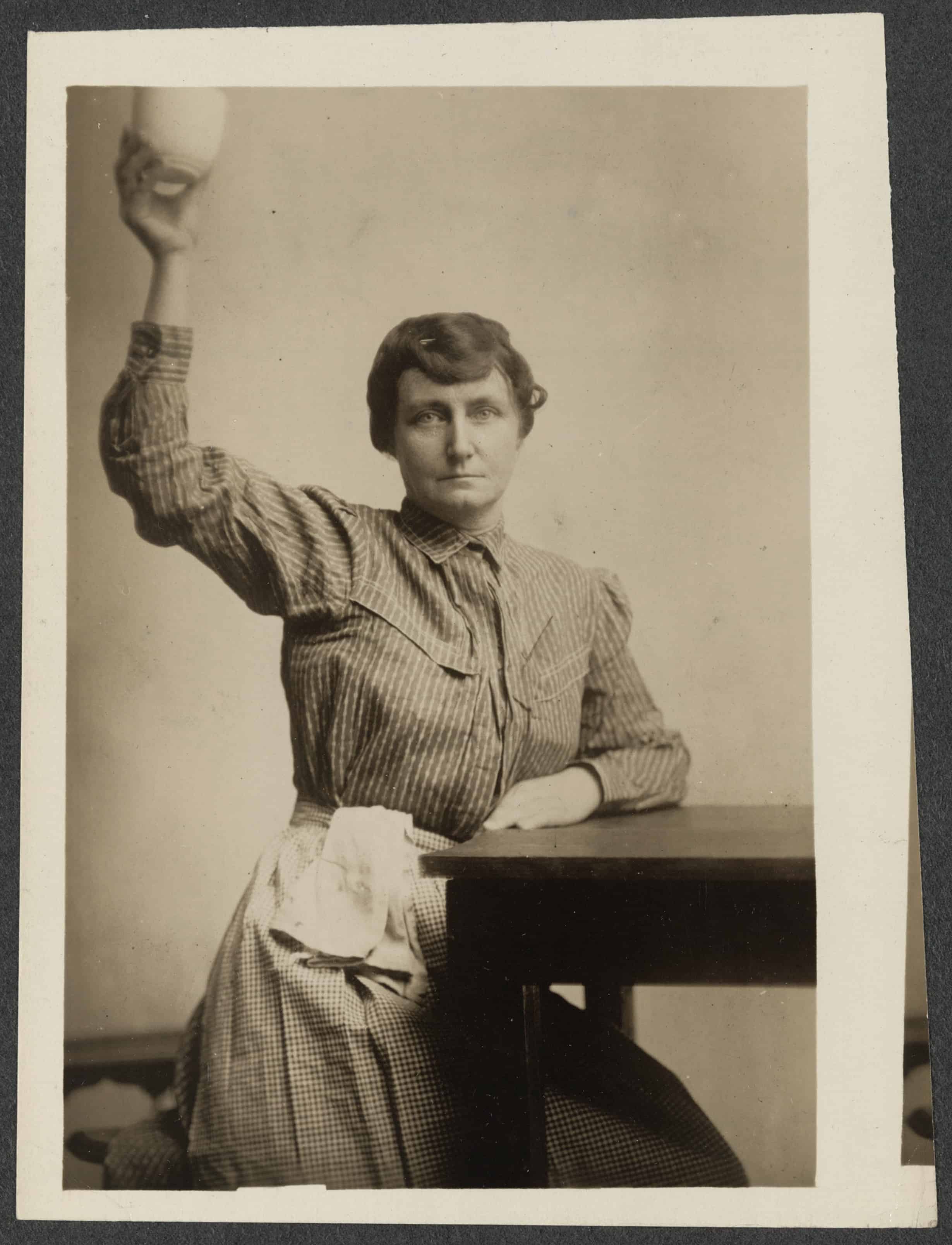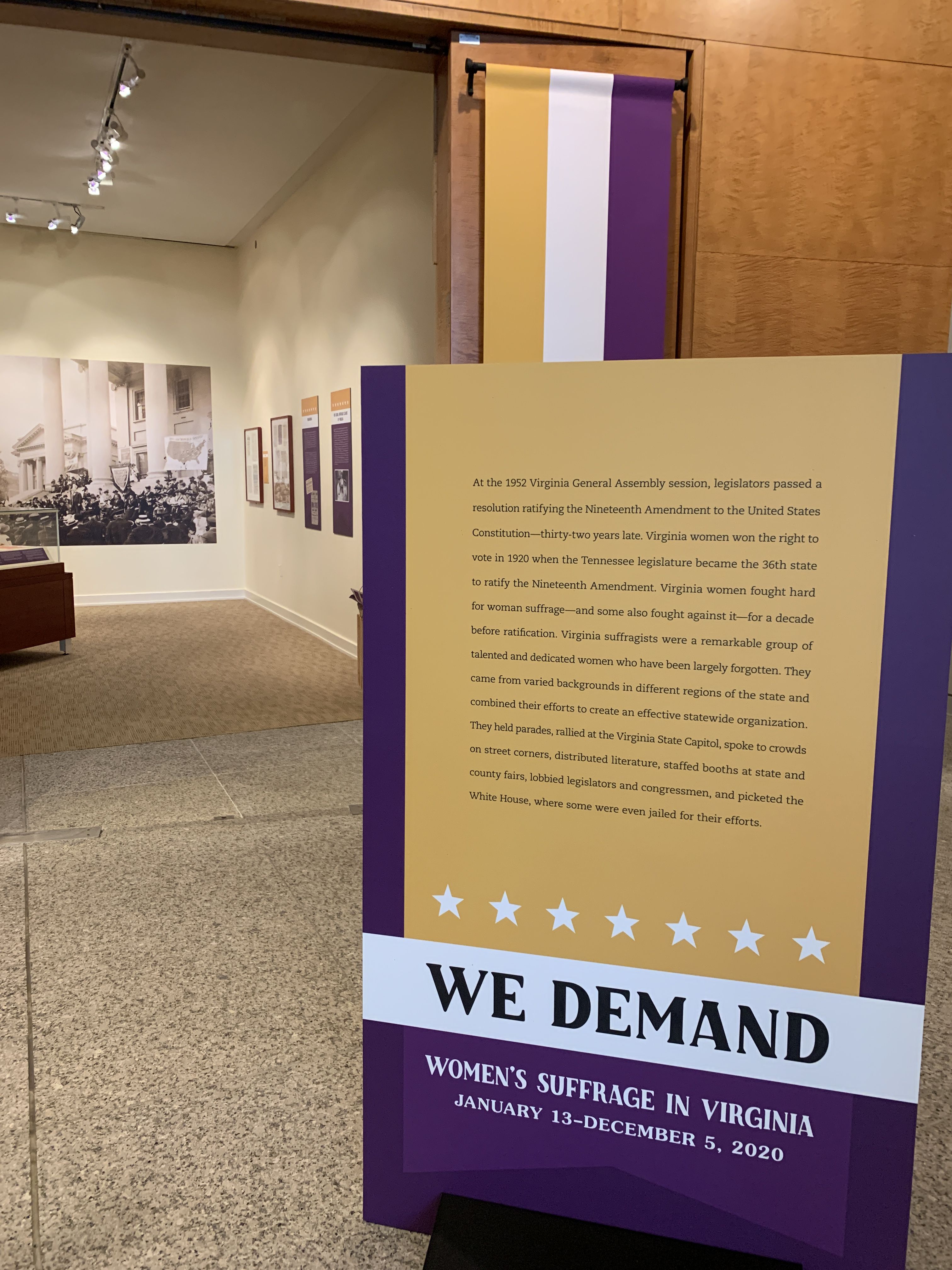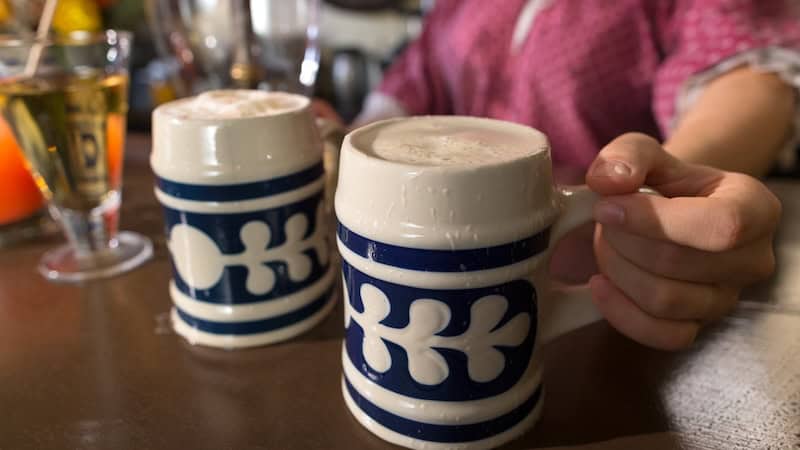We Demand: Women’s Suffrage in Virginia Exhibition
New Library of Virginia Exhibition Examines Virginia Suffragists

A new exhibition at the Library of Virginia digs deep into the archives to illuminate the struggle to achieve the vote for women in the commonwealth. We Demand: Women’s Suffrage in Virginia focuses on women throughout the state and the two groups that fought for equal suffrage: the Equal Suffrage League of Virginia and the Virginia branch of the Congressional Union for Woman Suffrage.
UNCOVERING HIDDEN FIGURES

The exhibition includes new information uncovered by the curators, Library of Virginia staff members Brent Tarter (retired), Marianne E. Julienne and Barbara C. Batson. Most notably, the exhibition presents female Virginia activists whose work hasn’t been previously acknowledged. It also looks at the role that African American women played and the additional obstacles they faced. We Demand displays banners, sashes, pamphlets, voting registers (including a line listing Maggie L. Walker), photographs, postcards, letters and other memorabilia as well as interpretative signage.
A look at the conflicts and at arguments for and against women’s suffrage sets the issue in the context of the time period. It also adds context to contemporary political disagreements:
-
The arguments concerning the roles of women and men shows similarities to today’s discussion of the Equal Rights Amendment.
-
The issue of states’ rights was on display during suffrage debates as Virginia politicians resisted national changes while considering a state amendment. Some of the suffragists also believed that earning the vote in Virginia was the preferred strategy; on the other hand, some others believed in fighting for federal constitutional change.
-
In another timeless disagreement over tactics, suffragists debated whether to protest during World War I: some thought that suspending protests would earn them respect; that would help them gain ground with detractors after the war.
-
The fear of allowing black women to vote highlighted the racism of many Virginians (including many suffragists) – although racist attitudes were more overt in the early 20th century than they are today.
-
As with contemporary gerrymandering and voter suppression issues, political parties demanded that prospective voters answer a variety of questions, questions that were unfairly given to blacks and to those in the opposing party. The strategy was designed to ensure one party received more votes and stayed in power.
-
Similarly, Elizabeth Otey, of Lynchburg, said: “In Virginia, that is our difficulty; our people do not honestly believe in democracy. They do not think the people should rule.” In The Suffragist, Dec. 11, 1915.
-
Across the spectrum today, we see the power of activism. In the early 20th century, the Equal Suffrage League in Virginia had 20,000 members and 145 chapters, making it the largest non-military organization in the commonwealth as of 1919. The suffragists supported other issues as well, such as children’s rights, public health, education and other women’s issues.
-
In a suffrage flier listing 12 reasons women should be allowed to vote, one argument stood out as evergreen: “Because the objections raised against them having the franchise are based on sentiment, not on reason.”
 A new book also arose from research for this exhibition. The Campaign for Woman Suffrage in Virginia was co-written by Tarter, Julienne and Batson, to be released by The History Press on Feb. 17, 2020.
A new book also arose from research for this exhibition. The Campaign for Woman Suffrage in Virginia was co-written by Tarter, Julienne and Batson, to be released by The History Press on Feb. 17, 2020.
We Demand sheds light on the courage and hard work of Virginia women who fought for enfranchisement. But look closer and let the exhibition illuminate the issues of today, too. The exhibition runs through May 28, 2021.
Library of Virginia, 800 E. Broad St., Richmond
Discover more suffrage centennial events with BOOMER ongoing coverage.


